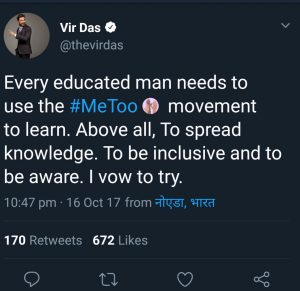Hasan Minhaj’s Patriot Act show has taken over really well in terms of spreading accurate facts. His episode, “Saudi Arabia” was an eye-opener to me personally as I wasn’t aware of this information, and his explanation to such controversial topics was really easy in understanding. In the first act, we see Minhaj introducing the Khashoggi murder case which happened in Saudi Arabia. He explains the whole issue of how Saudi Arabia acted in denial and later accepted it. It kind of created havoc for journalists in America. Later, he moves on in setting up an introduction of Muslims specifically focusing on Saudi Arabia, and explains why Saudi in particular since it is the “homes of two of the holies cities in the Islamic world: Mecca & Medina”. And throughout the first act, he continued explaining about Saudi Arabia and their methods of trying to portray it as progress in being a “modern country” which is completely false.
In the second act, he speaks about Indian American Muslims and explains due to a one particular country of Muslims the entire Muslim community is questioned and treated unfairly and similarly is shown in the novel “The Reluctant Fundamentalist”, we see how Changez and all the Muslim communities were treated in America after the 9/11 attack. Minhaj expresses that he has been told by people to “probably lean into the Indian side of your identity” since Muslims are taken and treated differently. He also talks about how people look up to Indians as “doctors, lawyers, engineers” which is an old stereotype and addresses a few names of Indian Americans as examples- John Kapoor (who was arrested for being involved with racketeering, frauds regarding medical), Raj Gupta (who was involved in inside trading), Dinesh D’souza (who talks and shares opinions which make zero sense), and a few more.
Overall I feel his main aim to introduce the topic on Indian Americans especially Muslims as he wanted to explain in the first segment why Muslims have a hatred.

